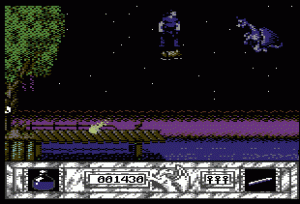
The early 90’s were a good time for gamers like myself growing up with the C64. I just about caught the tail end of the C64’s game market in the UK as a 9 yr old and was privileged to still be able to buy up Codemasters, Hit Squad and Encore budget titles with my pocket money. Around the time, I discovered CJ’s Elephant Antics and Spike In Transylvania, which were two of my favorite C64 games of the time.
Both games were created by the talented trio of David Clarke, Jonathan Temples (originally Smyth) and Ashley Hogg for Codemasters under their Genesis Software development label. All of their games came with some great quality visuals, excellent sound and heavily console’esq playability and feeling throughout.
Around the same time, Genesis got involved with Zzap 64 and provided them with some music demos (showcasing Ashley’s talents) to fill up their Mega-tape cover mount. It was a good promotion for the team. However, further to promoting Ashley’s talents, they decided to also pass on a preview of a game that has since become one of the titles on the C64 which many wished was actually completed.
Spellcast was the game, and the preview was to demonstrate a great little hack and jump game – not too dissimilar to classic NES titles like Castlevania with its look and feel. The game was to be Genesis Software’s first development as a group, with David as the lead and sole programmer (having recently left Choice Software).
“The game was started because David and I were fans of Ghost ‘n’ Goblins and Barbarian. We had not written any published games yet – David’s programming was starting to take off and so we went into it.”, Jon recalled.
Went into it they certainly did. Even in with a single developed level and demonstration, Genesis Software didn’t hold back to showcase their talents. Their demo came with full titles, high-score board and music with sampled sounds – it was very well polished.
The demo was also to be a showcase of some neat game features – with large fire breathing dragons, irritated wasps, floating log platforms and skull throwing creatures – most characters made up of multiple sprites. The main character was full of life with a wide variety of moves, and there were many neat little touches throughout – clearly this was a game the developers enjoyed creating.
“David and I loved the game and tried to put as many moves and options into it. The player, hacks, jumps, and uses of objects etc.”, reflected Jon.
Once the first level was practically complete – Genesis felt that they were onto a winner, with a game that would feature a lot of elements that the developers felt C64 games were lacking at the time. It was becoming clear though that this could no longer be the desired single load, and things switched very quickly over to multi-load. However, after touting the preview round to some of the key publishers of the time – the response was very surprising. “We tried to sell it to people but got no responses.”, Jon informs us.
As a result of no take up for the game, Genesis cut their losses and polished up the 1 level preview for Zzap, which was published on Issue 74’s covermount, Mega tape 18. No doubt as a clever way of showing what they were capable of. After their somewhat surprising rejection – undeterred, Genesis Software tried again by taking remains of David’s aborted New Zealand Story conversion for Ocean and creating what we now know as CJ’s Elephant Antics. The rest was history – Genesis Software getting their breakthrough and going onto develop some superb C64 titles.
But after experiencing Spellcast on Zzap’s covermount, many asked the question to why the game was never picked up by anyone. It’s not only a mystery to us, but is most likely still also to the guys from Genesis Software. A gaming opportunity missed surely?
Had the game have been picked up, what would a full and complete Spellcast have been like you may ask? The eagle eyed among you may well have caught the title screen clues, of which Jon sheds some light upon…
“The levels were meant to progress in the manner of the title screen. The title screen has the Spellcast name, but below is a black outline of a forest leading to a castle on the hill. Well the first level was the forest. Next was the swamp. Then the town leading to the castle.”. The Ghost n Goblins inspiration now very clear and evident.
Although believed that 1 level was all that ever existed, speculation suggested there was more. Both Jon and Ashley however confirmed that one level was all that ever was. Jon suggests that at best, there may be some extra sprites or bits of backgrounds intended for later levels – but unlikely. However, digging around in the preview itself resulted in finding assets which never got used – such as a 2 sprite skeleton creature.
Poking around in the game map actually causes the skeletons to come out of the ground, suggesting that either level 1 was larger at one point – or part of level 2 may have been started to a point. Another interesting “feature” (as David called it on a YouTube video posting of the preview), was where you could control the logs with a joystick in port 1, allowing your character to float over the entire level.
As you well may have spotted – Jon and Ashley have given plenty regarding the story of Spellcast, but David has sadly remained elusive – choosing not to speak as of yet, even after several contact attempts. It is hoped that he may some day change his mind and give an insight and different perspective about Spellcast. For now, all that can be done is to reflect on what could have been.
If for any reason you have never experienced Spellcast before, then load it up and take a look at a game which should have been finished and released. The game publishers of the time have a lot to answer for…
Contributions: Jonathan Temples, Ashley Hogg, RESET magazine
Supporting content
Available downloads
- Preview_SpellcastV1 (zip)
- Preview_Spellcast.zip (zip)
Gallery
Creator speaks
Jonathan Temples speaks about work on Spellcast…
“Well the game started because David and i were fans of Ghost ‘n’ Goblins and Barbarian. We had not written any published games yet so we decided to give it a go.
David’s programming was starting to take off and so we went into it. The coding was not that re-useable so David ran out of memory and thought about a multi-load option. We then tried to sell it to people but got no responses.
We then tried a cutey elephant game and that’s how CJ was born. David and I loved the spellcast game and tried to put as many moves and options into it. The player, hacks, jumps, and uses objects etc.
The levels were meant to progress in the manner of the title screen. The title screen has the Spellcast name but below is a black outline of a forest leading to a castle on the hill.
Well the first level was the forest. Next the swamp. Then the town leading to the castle.
The castle was going to have a very varied level theme. The end of level enemies were huge and if only someone had pumped money into it I could have worked.
As with David, Ashley and myself we loved the games we did and it was the love and the anger
sometimes of the poor conversions made for the Commodore 64. Spellcast had everything I think and we always tried to very our graphic look. If you look at spell-cast, cj’s and nobby – its all so different. We always tried to not become type-cast and always be different.
I may have disks in the house or sprites or ideas etc. David and I loved the commodore 64 scene then. All our games got good reviews and some times I feel that now I work in graphic design/product design the excitement of the 1990’s is one thing I miss.
I would love screen shots of the Spellcast in various points or sprites as my imac crashes the game on the title screen.”
Update history
- 22/12/17 – Added pre-Zzap 64 preview, as touted originally to publishers.
- 31/05/14 – Replaced with improved write up which was done for RESET issue 1.

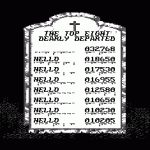
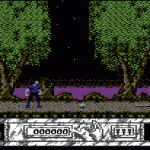
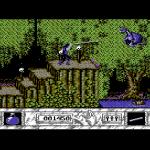
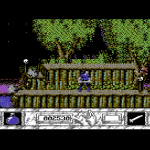
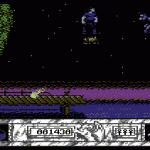
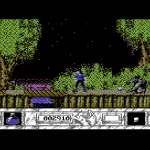
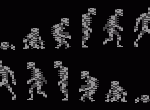
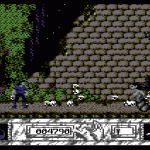
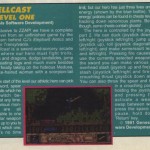
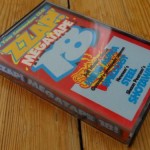

Heheh… It’s not difficult to see from the screenshot that this game was by the same makers of the CJ games. It appears they had a particular game engine they used over and over…